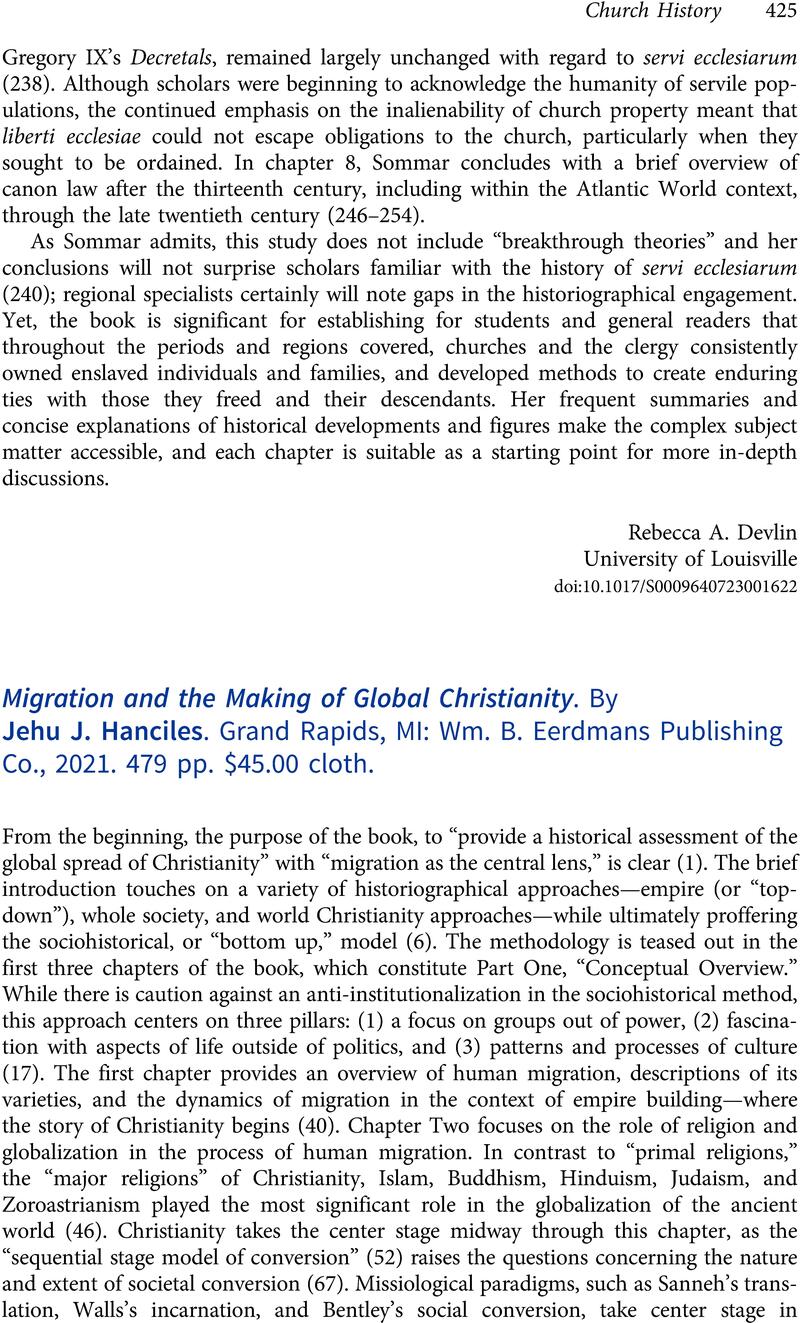No CrossRef data available.
Article contents
Migration and the Making of Global Christianity. By Jehu J. Hanciles. Grand Rapids, MI: Wm. B. Eerdmans Publishing Co., 2021. 479 pp. $45.00 cloth.
Review products
Migration and the Making of Global Christianity. By Jehu J. Hanciles. Grand Rapids, MI: Wm. B. Eerdmans Publishing Co., 2021. 479 pp. $45.00 cloth.
Published online by Cambridge University Press: 02 October 2023
Abstract
An abstract is not available for this content so a preview has been provided. Please use the Get access link above for information on how to access this content.

- Type
- Book Reviews and Notes
- Information
- Copyright
- Copyright © The Author(s), 2023. Published by Cambridge University Press on behalf of American Society of Church History


